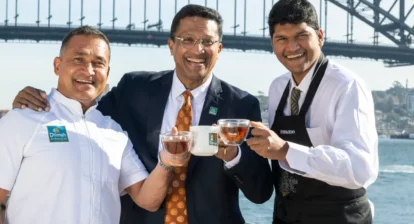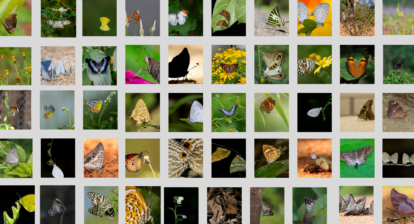The Endana Nature Corridor is a long-term forest restoration project implemented in Ratnapura District of Sri Lanka to build a forested pathway spanning across 3 km degraded tea lands and community-owned home gardens. A fragmented forest patch named Iharakanda Proposed Forest Reserve is successfully connected to Walankanda Forest Reserve, which is a part of Sinharaja Forest Range. The corridor spreads across 40 ha of once luxurious British era tea plantations, which are now abandoned for forest restoration. This will succeed in allowing the free migration of wildlife and plant life through effective seed dispersal between the two reserves leading to improved biodiversity. The fact that the project site lies close to Sri Lanka’s largest rainforest: Sinharaja Forest Complex in Ratnapura gives it greater ecological importance.
Origins
The brainchild behind the idea was Dilmah Tea’s founder Mr. Merrill J Fernando, who was an advocate of green restoration among many other things. The project initiated in January 2018 by symbolically uprooting exiting tea bush, which is now advised by Professors Nimal Gunatilleke and Savithri Gunatilleke of University of Peradeniya and led by Dr Nalaka Geekiyanage of Rajarata University of Sri Lanka. The significance of the work done on the corridor during its formative years garnered a prestigious grant from the Franklinia Foundation, Switzerland with ample co-financing for a period of four years.
Figure 1. A partial landscape view of the project site including Iharakanda Proposed Forest Reserve and community-owned home gardens
Figure 2. A map of Endane Nature Corridor, Iharakanda Proposed Forest Reserve and Walankanada Forest Reserve in Southwestern Sri Lanka
An Ecological Restoration Method
The planting method of the Endana Nature Corridor mimics the natural succession of lowland rainforest. This would ensure that over time a forest comes up, is sustainable and can evolve on its own. This method is known as the Relay Floristics Method and is a tried and tested method based on the principles of ecological restoration. First, sun-loving, fast growing, pioneer tree species are planted to restore the bare or degraded land. In places where pioneer vegetation comes up naturally among the abandoned the bushes are left intact for natural regeneration. In the next lap, once pioneer species have sprung-up we can plant native trees that require neither too much sun nor shade. By now the forest is taking shape and with a few thousands of seedlings of threatened tree species are now inter-planted.
Figure 3 An established plant nursery with endemic and native plants including threatned species
Introducing threatened Species to ENC
The Endana Nature corridor has progressed to introduce 47 globally threatened tree species through multiple tree planting campaigns. All planted seedlings are geotagged using GNSS technology and monitored through an Android mobile application where further details such as initial growth and functional traits data, as well as canopy openness and other microclimatic data around planted seedlings are recorded.
Figure 4 Monitoring the growth of planted saplings
Exploring Hidden Biodiversity
Extensive surveys have been conducted from time to time to explore the plant life in the Walankanda Forest Reserve adjacent to the project site. Mother populations of 544 plant species were georeferenced Of them, 212 (~40%) are endemic to Sri Lanka, and among them 204 are recorded in the Endane Nature Corridor.
Figure 5. A view from Walankanda Forest Reserve
Uplifting the Local Community
Community participation is needed for long-term sustainability of any forest restoration work. The Endana Estate community and residents living close to the forest and those who use forest resources for their livelihood activities such as cooking and obtaining animal fodder are actively involved in the forest. Therefore, the project has identified that it is important to involve them in the project to ensure that forest resources are used sustainably and in an equitable manner.
Figure 6 Community member is awarded for their sustainable actions as responsible stewards showcasing a model payment for ecosystem services
They are assisted with technical expertise and resources to begin sustainable community beekeeping, animal husbandry and organic farming.
Figure 7. Community member at one of the planting campaigns
Figure 8 Community members with Beekeeping expert Dr Anura Indrajith, Mr. Amila Perera and Dr. Nalaka Geekiyanage
Educating and Spreading Awareness
Believing in SDG 17: partnership for goals and strengthening participation and rallying support in all fronts, awareness sessions about forest restoration activities are held at intervals for Forest Officers, Dilmah Conservation staff, and local administrators. General population of local community are engaged through hands-on trainings in the hopes that they too will take on the responsibility of safeguarding the natural
Figure 9. An awareness programme for pre-school kids in Endana community
Creating Rippling Impact
Shorea ovalifolia – a species thought to be extinct in the wild was rediscovered and its seedlings nurtured for field planting. The 2020 red list issued last year listed this species as Critically Endangered (CR). A few new species to the flora of Sri Lanka are earmarked, which are monitored for further verification and writing scientific manuscripts. A new leafless species of orchid, Gastrodia pushparaga, was discovered during one of the project’s mandated research work in 2021 by a team that included Dilmah Conservation Centre Coordinator, Amila Perera, along with other research team members including Bathiya Gopallawa, Indrakeela Madola, Deepthi Yakandawala, Pankaj Kumar, Harsha Jayawickrama, and Mark Chase. The species is known to be threatened due to the small population size which could be classified as threatened as per IUCN guidelines.
Figure 10. Newly described leafless orchid in Sri Lanka named after a precious yellow sapphire
Did you know Dilmah donates 15% of its pre-tax profits for humanitarian and environmental conservation initiatives driven by its own humanitarian arm the Merrill J Fernando Charitable Foundation and environmental conservation and sustainability arm, Dilmah Conservation?







